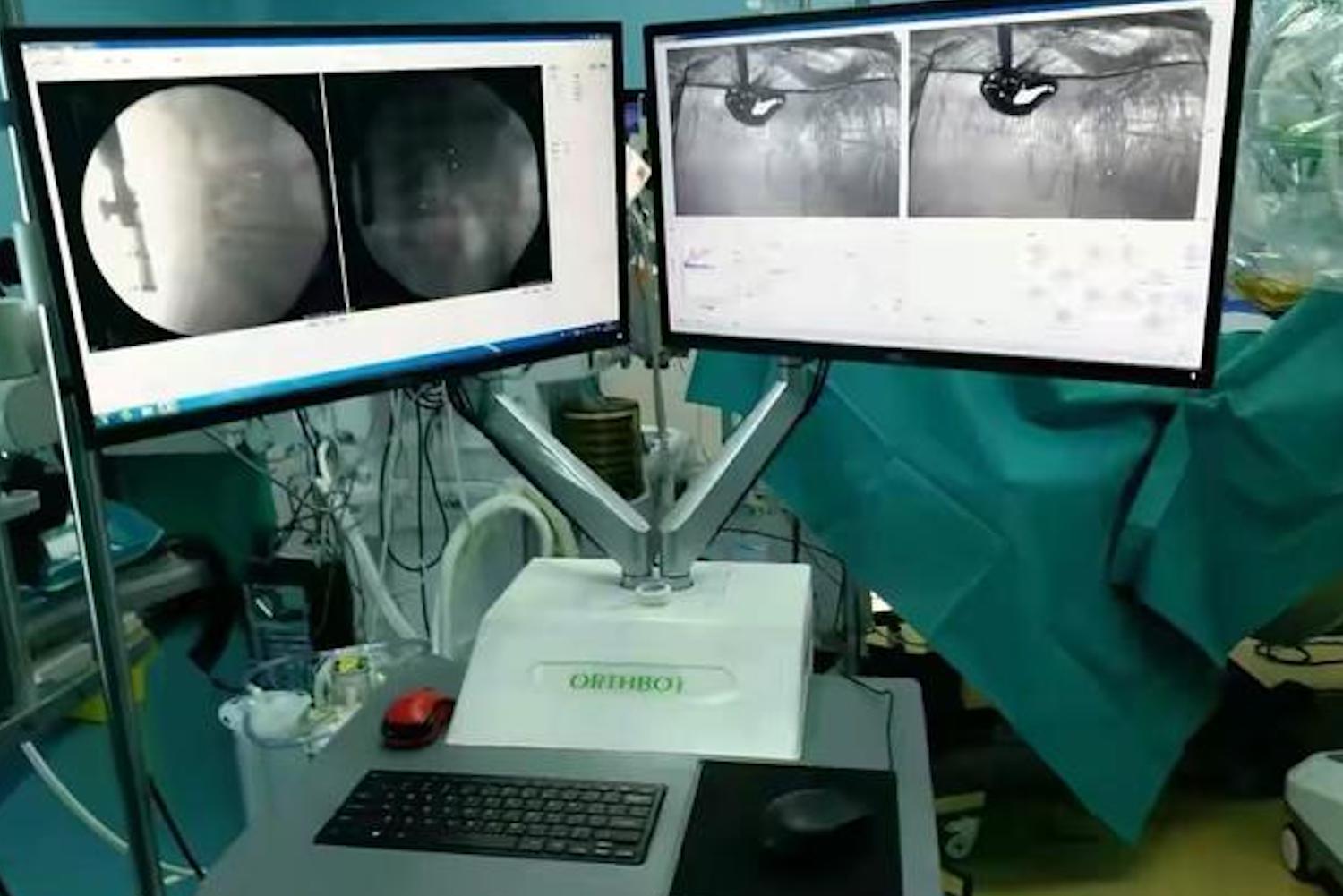(ATF) Chinese authorities have issued an approval for a orthopaedic surgical robot, which has made its operational debut on a patient in Shenzhen.
Shenzhen Xinjunte Intelligent Medical Devices successfully obtained a registration certificate from the National Medical Products Administration for its advanced orthopaedic surgery robot.
A 36-year-old woman suffering from low back and leg pain, which gave her walking difficulties, was the robot’s first patient at the spinal surgery department of Shenzhen Second People’s Hospital.
She was diagnosed as having intervertebral disc herniation with lumbar instability – the most common cause of low back pain – and needed lumbar spinal fusion surgery and a discectomy – removal of herniated disc material pressing on a nerve root or spinal cord.
The patient agreed to be operated on by the “robot doctor”. During the operation, Zhou Wenyu, the department’s chief physician, used a computer to program the robot’s placement of a spinal nail used in the fusion surgery. No other human assistance was required, the hospital said.
“The spine surgery carried out by a robot only lasted one and a half hours,” which was about an hour shorter than the traditional all-doctor operation, Zhou told Shenzhen News.
AGEING POPULATION
Zhou added: “In addition, the number of X-rays required were reduced by up to 80%, which greatly reduced the time, cost and surgical risk.”
With China’s large ageing population – there are an estimated 300 million elderly citizens – orthopaedic diseases have become common.
Shenzhen Xinjunte has tapped into this potential customer base by developing and producing a robot specialising in orthopaedic surgery.
A Xinjunte executive said the company planned to accelerate commercialisation of surgical robots, roll them out to more domestic hospitals, continue to iterate new versions based on clinical use feedback. The company also hoped to broaden the range of procedures that the robots can undertake.
At the same time, the company will also rely on existing surgical robot products, independently research and develop or integrate related orthopaedic implants, and expand upstream and downstream.






















